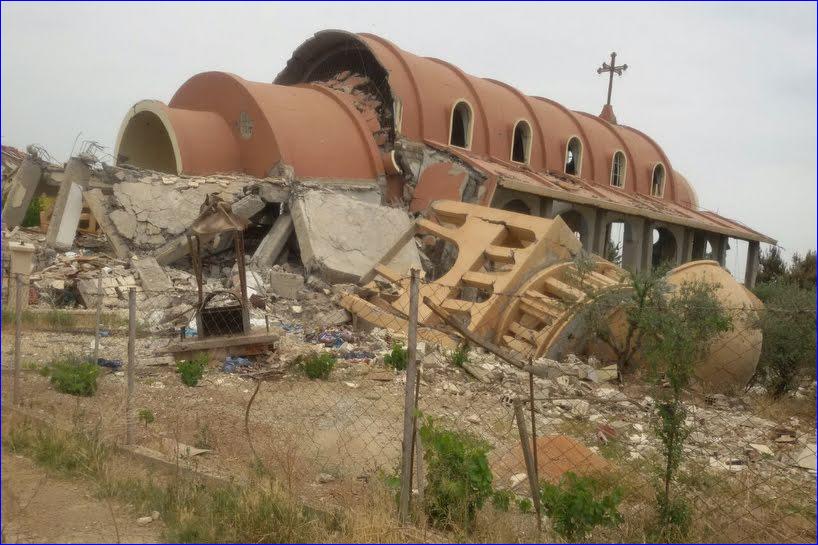


Related: Read the full report here
Part I provides an overview of the events of February 2015 when the Islamic State launched an assault targeting the 35 Assyrian villages in the Khabour Region. The surprise assault forced thousands of Assyrians to flee their homes. Dozens were killed, and upwards of 200 civilians were taken captive by the terrorist group. For a period of approximately three months, Islamic State militants occupied the villages which formed its southern bank, as well as a number of villages on the northern bank. During this time, homes were looted and churches were set on fire or severely damaged by explosions.
Part II discusses the Assyrian community in Khabour. In the aftermath of the Assyrian Genocide (1914-1923) and the Simele Massacre (1933), thousands of Assyrian survivors were relocated to refugee camps in French-controlled Syria along the Khabour River. Originally intended to be temporary, the camps became permanent settlements consistently inhabited by the Assyrians until the Islamic State offensive in February 2015. Prior to the start of the conflict in Syria, it is estimated that as many as 20,000 Assyrians lived in the Khabour Region, spread across its 35 villages. The Islamic State assault effectively ended the Assyrian presence in the region, as less than 1,000 returned following its liberation from Islamic State control.
Related: Timeline of ISIS in Iraq
Related: Attacks on Assyrians in Syria By ISIS and Other Muslim Groups
Part III examines elements of Assyrian cultural heritage in Khabour, including places of worship, as well as social practices and traditions. The Syrian Government prohibited the establishment of Assyrian cultural centers or organizations. Thus, most Assyrian cultural heritage sites in Khabour are church buildings, which became center to cultural norms and practices. In addition to their use as places of worship, Assyrian churches in the Khabour Region were used as archival places and community centers in lieu of spaces designed to promote Assyrian culture and heritage. The significance of religious cultural heritage in Khabour as symbolic of the Assyrian culture and certain aspects of it, therefore cannot be overstated. Prior to the February 2015 attacks, the Khabour Region contained dozens of holy sites, which are listed in this section.
Part IV provides evidence and context on the destruction of Assyrian tangible and intangible cultural heritage in northeast Syria. The Islamic State specifically and systematically targeted the culture, identity, and heritage of the Assyrian people as part of its policy of genocide and ethnic cleansing. Numerous Assyrian cultural and religious sites in northern Iraq and northeastern Syria have been destroyed. In Khabour, a total of 11 Assyrian churches were destroyed by the terrorist group, and thousands were displaced, resulting in considerable risk that Assyrian cultural identity will disappear.
Part V draws conclusions from the previous sections and provides recommendations to promote accountability of perpetrators and assist the Assyrian people in recovering. There is strong evidence of the systematic intentional destruction of Assyrian tangible cultural heritage by the Islamic State in both Syria and Iraq, and the existence of such a policy is only confirmed by official publications of the Islamic State. These actions not only constitute war crimes, but were undertaken pursuant to a policy of cultural genocide. We call on the international bodies such as UNESCO to investigate the destruction of the cultural and religious sites presented in this report and urge relevant government authorities to ensure adequate safeguards for the protection and conservation of Assyrian cultural heritage within their jurisdiction.

or register to post a comment.